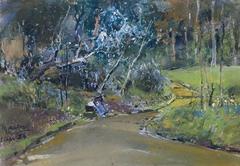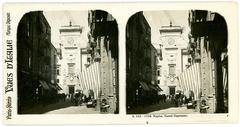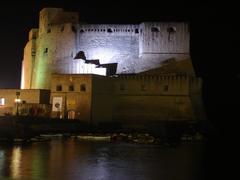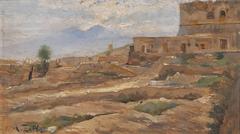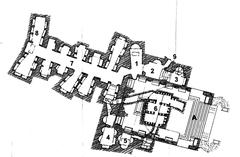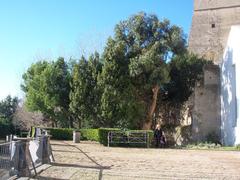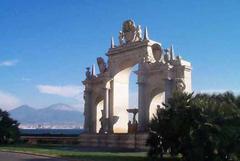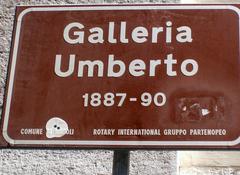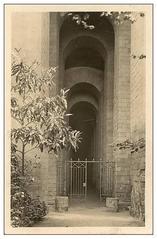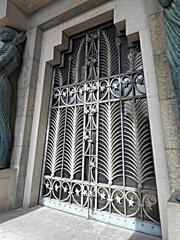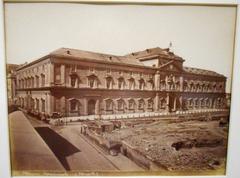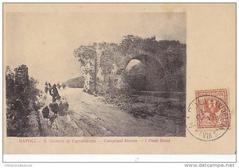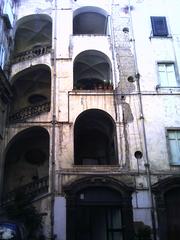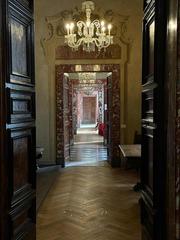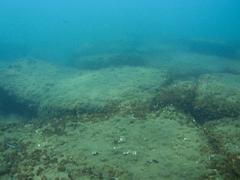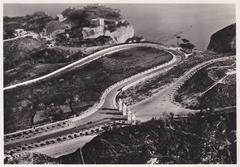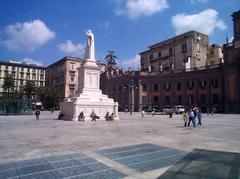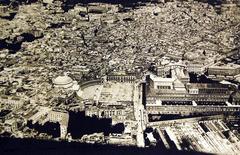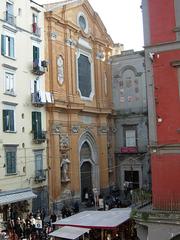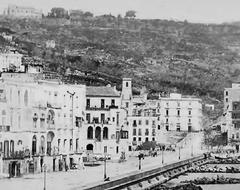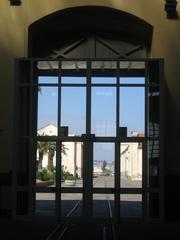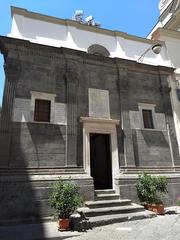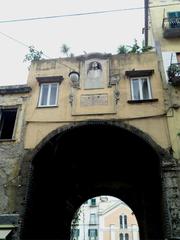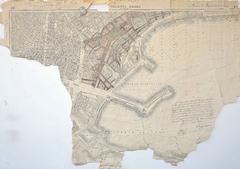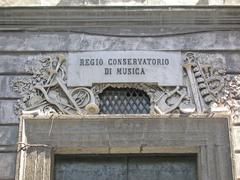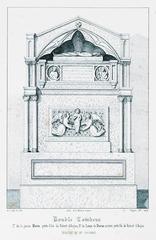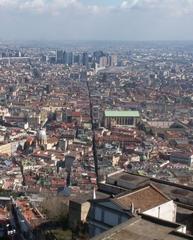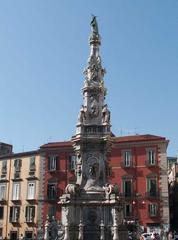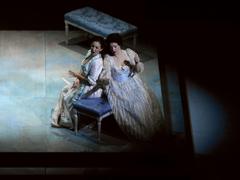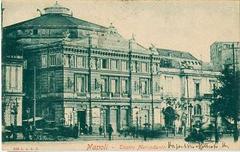Visiting Cattedrale di Santa Maria Assunta in Naples: Hours, Tickets, and Tips
Publication Date: 17/07/2024
Introduction to Cattedrale di Santa Maria Assunta
The Cattedrale di Santa Maria Assunta, commonly known as the Naples Cathedral or Duomo di Napoli, is an architectural marvel and a historical gem nestled in the heart of Naples, Italy. This iconic landmark, dating back to the late 13th century, stands as a testament to the city’s rich cultural and historical tapestry. Visitors to the cathedral are treated to a visual feast of Gothic and Baroque architectural styles, with the cathedral undergoing various modifications and restorations over the centuries. From its origins under Charles I of Anjou to the Neo-Gothic facade by Enrico Alvino, the cathedral encapsulates a layered history, embodying the spirit and resilience of Naples (Naples Cathedral History, Baroque Influence, Neo-Gothic Facade).
One of the most significant sections of the cathedral is the Chapel of San Gennaro, dedicated to Saint Januarius, the patron saint of Naples. This chapel not only houses the saint’s relics but is also the site of the miraculous liquefaction of his blood, an event that draws thousands of pilgrims each year (San Gennaro Chapel). The cathedral’s rich history is further accentuated by its survival through historical events such as the 1343 earthquake and the 16th-century plague, during which the relics of San Gennaro were paraded through the streets in a plea for divine intervention (Plague Processions).
This guide aims to provide comprehensive coverage of the cathedral’s history, architectural highlights, visitor information, and travel tips. Whether you’re a history enthusiast, an art lover, or a curious traveler, this guide will enrich your visit to the Cattedrale di Santa Maria Assunta and ensure a memorable experience.
Table of Contents
- [Introduction](#introductionintroduction)
- [History of Cattedrale di Santa Maria Assunta](#history-of-cattedrale-di-santa-maria-assuntahistory-of-cattedrale-di-santa-maria-assunta)
- [Origins and Early Construction](#origins-and-early-constructionorigins-and-early-construction)
- [Architectural Evolution](#architectural-evolutionarchitectural-evolution)
- [The Chapel of San Gennaro](#the-chapel-of-san-gennarothe-chapel-of-san-gennaro)
- [Historical Events and Significance](#historical-events-and-significancehistorical-events-and-significance)
- [Artistic Masterpieces](#artistic-masterpiecesartistic-masterpieces)
- [Visitor Information](#visitor-informationvisitor-information)
- [Ticket Prices and Visiting Hours](#ticket-prices-and-visiting-hoursticket-prices-and-visiting-hours)
- [Travel Tips](#travel-tipstravel-tips)
- [Nearby Attractions](#nearby-attractionsnearby-attractions)
- [Special Features](#special-featuresspecial-features)
- [Events and Festivals](#events-and-festivalsevents-and-festivals)
- [Photographic Spots](#photographic-spotsphotographic-spots)
- [Modern-Day Restoration and Preservation](#modern-day-restoration-and-preservationmodern-day-restoration-and-preservation)
- [FAQ](#faqfaq)
- [Conclusion and Call to Action](#conclusion-and-call-to-actionconclusion-and-call-to-action)
- [References and Further Reading](#references-and-further-readingreferences-and-further-reading)
History of Cattedrale di Santa Maria Assunta
Origins and Early Construction
The Cattedrale di Santa Maria Assunta dates back to the late 13th century, during the reign of Charles I of Anjou. Construction began in 1294 and was completed in 1323, a period marked by the Gothic architectural style. The cathedral was built on the foundations of two earlier Christian basilicas, themselves constructed over ancient Greek and Roman temples, reflecting the layered history of the site (Naples Cathedral History).
Architectural Evolution
Over the centuries, the cathedral has undergone numerous modifications and restorations. The original Gothic structure was significantly altered in the 17th century when the nave was redesigned in the Baroque style. This period saw the addition of elaborate stuccoes, frescoes, and marble decorations, reflecting the Counter-Reformation’s emphasis on grandeur and religious fervor (Baroque Influence).
In the 19th century, the facade was reconstructed in a Neo-Gothic style by architect Enrico Alvino, blending historical reverence with artistic innovation (Neo-Gothic Facade).
The Chapel of San Gennaro
One of the most significant additions is the Chapel of San Gennaro, constructed between 1608 and 1637, dedicated to Naples’ patron saint, Saint Januarius (San Gennaro). The chapel houses the saint’s relics, including his blood, believed to liquefy miraculously twice a year, attracting thousands of pilgrims (San Gennaro Chapel).
Historical Events and Significance
The cathedral has witnessed numerous historical events, such as surviving a devastating earthquake in 1343 and playing a crucial role during the 16th-century plague. The relics of San Gennaro were paraded through the streets in a plea for divine intervention, a tradition that continues in times of crisis (Plague Processions).
Artistic Masterpieces
The cathedral is home to numerous artistic masterpieces, including 14th-century frescoes by Lello da Orvieto and works by renowned artists such as Luca Giordano and Domenichino. These artworks enhance the cathedral’s aesthetic appeal and serve as a visual narrative of its rich history (Luca Giordano).
Visitor Information
Ticket Prices and Visiting Hours
The Naples Cathedral is open to visitors daily, but hours may vary. It’s advisable to check the official website for the most up-to-date information on opening hours and any special closures (Naples Cathedral Official Site). Tickets are generally free, but there may be a fee for access to certain areas like the Chapel of San Gennaro or guided tours.
Travel Tips
- Best Time to Visit: Early morning or late afternoon to avoid crowds.
- Dress Code: Modest attire is required as it is a place of worship.
- Photography: Allowed in most areas but avoid using flash.
- Accessibility: The cathedral is accessible to visitors with limited mobility, but some areas may have restrictions.
Nearby Attractions
- Spaccanapoli: A famous street that splits the old city and is lined with shops, cafes, and historical sites.
- Naples National Archaeological Museum: Home to one of the most extensive collections of Greco-Roman antiquities.
- Castel Nuovo: A medieval castle that offers stunning views of the city and the Bay of Naples.
Special Features
Events and Festivals
One of the highlights is the Miracle of San Gennaro, celebrated twice a year. The event attracts thousands and is a cornerstone of Neapolitan religious culture. Guided tours are available and provide deeper insights into the cathedral’s history and architecture.
Photographic Spots
Noteworthy spots include the Neo-Gothic facade, the Chapel of San Gennaro, and the Baptistery of San Giovanni in Fonte. These locations offer excellent opportunities for photography.
Modern-Day Restoration and Preservation
The cathedral has undergone extensive restoration efforts to preserve its historical and artistic heritage. Supported by both the Italian government and international organizations, these efforts ensure that the cathedral remains a vibrant part of Naples’ cultural landscape (Restoration Efforts).
FAQ
Q: What are the visiting hours for Naples Cathedral?
- A: Visiting hours vary; check the official website for the latest information.
Q: Are there any ticket fees?
- A: General admission is usually free, but fees may apply for special areas or guided tours.
Q: Is the cathedral accessible for visitors with limited mobility?
- A: Yes, but some areas may have restrictions.
Q: Can I take photographs inside the cathedral?
- A: Yes, but avoid using flash.
Conclusion and Call to Action
The Cattedrale di Santa Maria Assunta is not just a place of worship but a monumental symbol of Naples’ historical and cultural evolution. From its Gothic origins to its Baroque transformations and modern-day restorations, the cathedral encapsulates the city’s resilience, artistic heritage, and spiritual significance. Download the mobile app Audiala for more updates, check out other related posts, or follow us on social media to stay informed about Naples’ historical sites and events.
References and Further Reading
- Naples Cathedral History, n.d., https://www.naplescathedral.org/history
- Baroque Influence, n.d., https://www.baroqueartnaples.com
- Neo-Gothic Facade, n.d., https://www.neogothicarchitecture.com
- San Gennaro Chapel, n.d., https://www.sangennaro.org
- Plague Processions, n.d., https://www.plaguehistory.com
- Luca Giordano, n.d., https://www.baroqueart.com
- Restoration Efforts, n.d., https://www.restorationprojects.com
